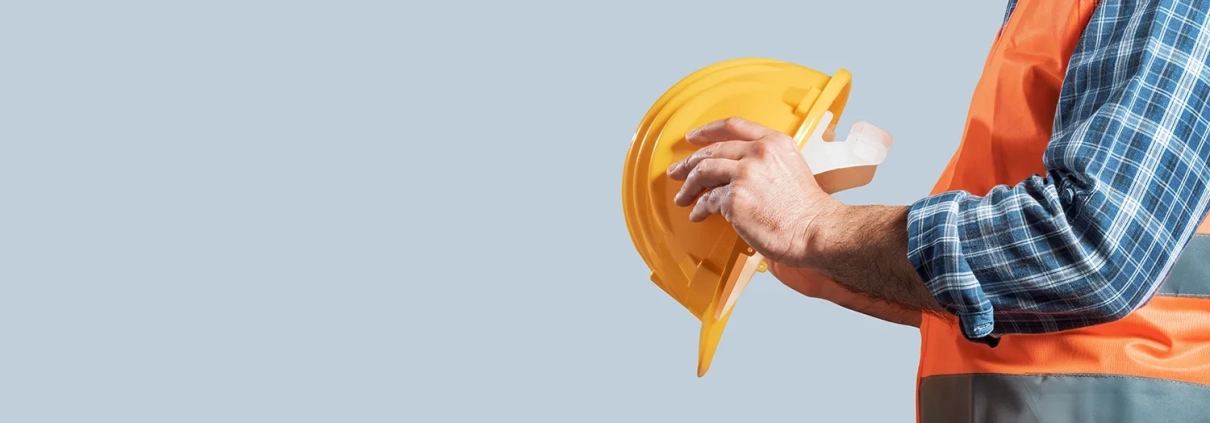Personal Protective Equipment
Personal Protective Equipment (PPE) is one of the final lines of defence against workplace hazards. While it should never replace safe systems of work or engineering controls, PPE plays a vital role in reducing risk where other controls cannot fully eliminate it.
Correct Selection of PPE
Choosing the right PPE is critical. Different tasks expose workers to different hazards, and the wrong equipment can give a false sense of security — and may not provide the right level of protection. For example:
- Hard hats must be rated for the type of work (e.g. impact protection for construction).
- Respiratory protective equipment (RPE) must match the contaminant. For example, a dust mask will not protect against fumes or vapours.
- Eye protection should be impact-rated where flying particles are possible.
- Gloves must be suited to the hazard — cut-resistant for handling sharp materials, thermal-insulated for heat or cold, or chemical-resistant for handling substances.
- Noise protection (ear defenders or earplugs) must match the noise level and environment, providing sufficient attenuation without over-protecting and isolating the worker.
- Foul-weather clothing should keep workers warm and dry without restricting movement, while maintaining high-visibility properties when required.
Employers have a duty to assess risks and provide PPE that meets relevant standards (such as EN or BS EN markings). Workers should never substitute one type of PPE for another without approval. Advice should always be sought from both a competent health & safety professional and the relevant PPE manufacturer or distributor to ensure the equipment is suitable for the task.
Pre-Use Inspection
Before every shift, workers should check their PPE to ensure it is safe to use. Different items of PPE will have their own specific checks, and reference should always be made to the manufacturer’s instructions.
Examples of general checks include:
- Looking for cracks, dents, or degradation in hard hats.
- Checking elastic straps, filters, and seals on respirators.
- Inspecting gloves for splits or wear.
- Confirming that high-visibility clothing is not overly faded or heavily soiled.
A quick pre-use inspection can prevent serious injuries. If there’s any doubt, PPE should be replaced immediately. Damaged PPE is less able to provide protection and may fail when it is needed most.
PPE Compatibility
Different types of PPE must be compatible with each other. Poorly matched items can reduce protection, make equipment uncomfortable, or lead to workers removing PPE altogether.
Examples of compatibility issues include:
- Safety glasses and respirators – glasses must fit comfortably without breaking the seal of a mask.
- Ear defenders and hard hats – defenders should not interfere with the fit or stability of the helmet.
- High-visibility clothing with harnesses – hi-vis jackets should not obscure harness attachment points.
- Gloves with tools or controls – gloves must protect the hands while still allowing safe and precise use of equipment.
Employers should test PPE combinations during risk assessments and, where possible, select equipment designed to work together. Workers should report any problems with PPE combinations so adjustments can be made.
Correct Storage
Improper storage can shorten the lifespan of PPE. Equipment should be stored:
- In a clean, dry environment – for example, a designated PPE cupboard, locker, or sealed storage box rather than being left on the floor of a workshop.
- Away from direct sunlight, extreme heat, or chemicals – for example, do not leave a hard hat on a vehicle dashboard in the sun, or store respirators near paints, solvents, or cleaning products.
- In protective cases or racks where appropriate – for example, safety glasses stored in a case to prevent scratches, or harnesses hung on dedicated racks to keep them tangle-free and in good condition.
Leaving PPE in toolboxes, on dashboards, or piled on benches can quickly make it ineffective when it is needed most.
Expiry Dates on PPE
Certain PPE items have a defined service life or expiry date:
- Hard hats typically expire 3–5 years after manufacture, even if they appear undamaged.
- Respiratory masks and filters may degrade or become unsafe after their expiry date.
- Fall arrest equipment often has strict life limits set by the manufacturer.
Employers should maintain a PPE register and ensure expired equipment is removed from service.
What to Do If PPE Is Damaged
If PPE is found to be damaged:
- Do not work with damaged PPE.
- Stop work immediately.
- Report it to a supervisor or manager.
- Do not start working again until you have a functional replacement.
- Replace it with safe, compliant equipment.
- Hand it in or throw it away safely, so nobody else accidentally picks it up to use.
Using damaged PPE can be as dangerous as not wearing any protection at all.
Conclusion
PPE is only effective if it is correctly selected, inspected, worn, compatible, stored, and replaced when needed. Employers and employees share responsibility for ensuring it is fit for purpose. By taking PPE seriously — and by following professional and manufacturer guidance — workplaces can prevent avoidable injuries and protect their teams.
Contact us today to discuss your requirements.
*Disclaimer: Please note that it is the responsibility of each organisation to assess and implement occupational health and safety arrangements and select PPE appropriate to their workplace and work activities. This page is for information purposes only. The information contained on this page is intended as a general introduction to PPPE and is not intended as specific advice from a qualified professional. Practical Safety Ltd aims to avoid, but accepts no liability, in the case that any information stated is incorrect, incomplete, or out of date.



